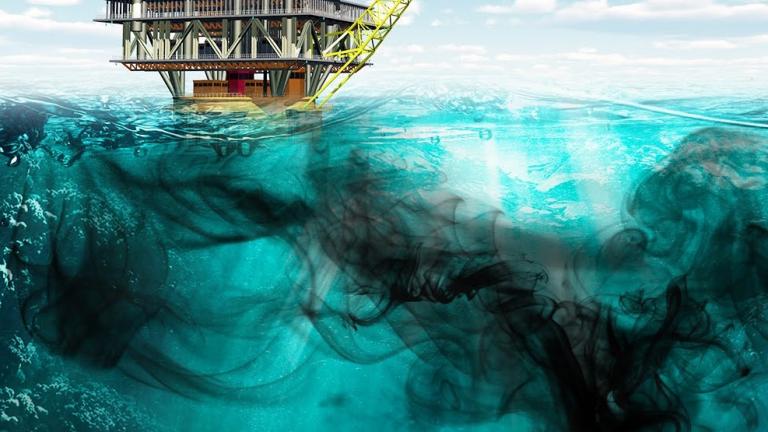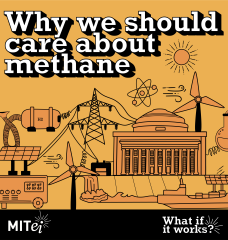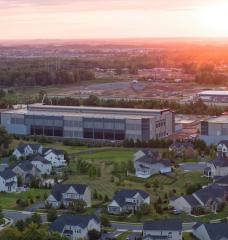
Deep-Water Drilling
The first deep-well mining was exercised in the ocean waters at Summerland, California, in 1896. Since then the oil and gas (O&G) companies have been challenging ocean depth that has taken the O&G industry into the ultra-deep-water era.
Water accounts for more than 67% of the earth. For this reason, the O&G companies have taken steps to explore the conventional drilling apparatus from onshore to the deep-seas where vast reserves of the natural resources exist. Mining and extraction of the O&G resources is already a tedious activity on land, this exercise becomes applicably demanding in the offshore operations.
The technology and its application are comparatively new in South Asia, although it has a vast water area in the south that accounts for 19.5% of the world’s ocean and holds approximately 32 billion tons of mineral resources.
Need for Deep-Sea O&G Exploration in SA
With 8 countries and 1.9 billion people, South Asia is already one of the most energy-starved regions in the world. The need for massive energy consumption becomes even more critical as the region recently emerged as the fastest growing economic region if the world at 7.06% GDP growth. However, the lack of central energy hub and well-coordinated energy trading and cooperation has led to a weak trade trajectory in the region (only 5% intra-regional trade) and one of the least economically integrated regions in the world.
While the demand for energy is growing at 4.6%+, the region has only 707kWh (2014) of per capita electricity consumption, as opposed to the world average of 3,128kWh. Total energy consumption in 2013 was 928.4mtoe against the domestic production of only 641.7mtoe, leading to a massive 286.7mtoe of an energy gap in the region. This gap is filled in by importing LNG bases and transporting it via tedious routes across half of the world. But a concerted effort to make the full realization of power trading within the neighboring countries and exploring the indigenous O&G mother lodes in the IOR and Bay of Bengal remains unrealized.
Opportunities in the Indian Ocean
Importing around 75% of its hydrocarbon’s requirement, India is the 4th largest consumer and 5th largest importer of O&G in the world. Other than renewables and alternative energy source hydrocarbons meet around 40% of energy requirements in India. The country houses 20% of the world population, but only 3.3% of its energy. As a result, more than 85% of O&G domestic demand is met through imports. This massive demand-supply gap is resulting in domestic production and exploration activities are not marching with the growing demand for energy.
India has 26 sedimentary basins equivalent to the land area of 3.14MMkm2 which offers a vast potential of hydrocarbon resources. Among this, 0.40MMkm2 lies in offshore shallow water, while 1.35MMkm2 is in 3 deep-wells at the east coast in the Bay of Bengal, south-east in the Andaman Sea, and west coast in the Arabian Sea. Although there is no separate estimate for O&G reserve in the IOR deep-water, a prognosticated estimate suggests that the region may have 32 billion tons (recoverable - 12 billion tons) of mineral resources. The deep-water hydrocarbon potential covering about 1.4 million km2 of the Indian offshore is estimated to be between 5-9 billion tons of oil and gas.
Gastropods at the Bay of Bengal
Bangladesh is currently dependent on onshore fields for gas output, with production hovering around 2,700MMCFD against a demand for over 3,300MMCFD. To meet the growing energy demand and depleting onshore energy reserve, the country lately but recently has concentrated on exploring O&G reserve in the Bay of Bengal.
The Bay of Bengal is the least explored area for O&G potential. The western part (India) and the eastern part (Myanmar) of the Bay have discovered significant natural gas reserves in the past decade. Geological studies and interpretations suggest that Bangladesh can have significant gas resources in the onshore and offshore belts which are yet to be discovered. The seabed of Bay of Bengal is home to a rich core of solidified natural gas known as: ‘diamond’ or ‘gas hydrates’. However, Bangladesh has not matured its technology to extract the petroleum at such depth or run the feasibility study.
At the Bay, Bangladesh has 11 blocks for O&G exploration at the India and Myanmar border. Among these, 6 prospective blocks are at the Myanmar border. However, out of these 6 blocks, only one (DS Gas Block 12) was assigned to South Korean Posco Daewoo International Corporation, an IOC also involved in the Shwe gas field in Rakhine state, Myanmar. The Shwe project first came into operation at the Mya field in July 2013 and the gastropod offered 500mmscfd by the end of 2014.
Under its assignment, Daewoo would be investing $60-120 million from 2017-2021 to conduct 2D and 3D seismic surveys in the block 12. In the continuation, the government intended to award the next offshore block and its multi-client seismic survey in 2018. But much to the citizen’s dismay, the Energy Division recently canceled the decision to conduct the non-exclusive 2D multi-client survey.
The exclusivity of the gastropods in the bay is unique enough for the Government of Bangladesh (GoB) to start immediate exploration and operation in the Bay of Bengal. Myanmar hit the Shwe gas field in 2004 and started exploring since 2014, which is adjacent to the recently canceled DS block 12. Especially the Rakhine offshore basin at the southeastern bay of Bangladesh has had mining successes in recent years. As the offshore Rakhine Basin of Myanmar and the southeastern bay of Bangladesh are part of a single geological line, there should be bright prospects of securing a natural gas mother lode in the Bangladesh part.
Roadblocks to Deep-Sea O&G Exploration
As much as we talk about the need for exploration and production of deep-sea hydrocarbon, several roadblocks may curb the attempt:
Expensive Drilling Measurements: The cost of extracting minerals from deep-water reservoirs is extremely high as the process faces many logistical and technical challenges. The average cost of drilling a deep-sea well can go up to $100 million and can take several months to complete. The daily cost of drilling rigs can be as much as $1 million and the cost of the drilling components can be 50%+ of the CAPEX. Consequently, this sector demands high investment for exploration, exploitation, and extraction. For example, an investment worth over $30 billion is required for exploring the O&G potential in the Bangladesh part of the Bay of Bengal.
‘Not in My Backyard’: There are two cases when the exploration of deep-sea hydrocarbon can cause tension among the intended parties. In the first case, most of the reserves share borders of multiple countries. In South Asia, the major oil and gas blocks within Bangladesh's sea areas ignited a territorial dispute and brief diplomatic spat with India and Myanmar. However, Bangladesh won the battle with Myanmar over the maritime dispute in the Bay of Bengal, where the international tribune of The Hague went in favor of the country in March 2012. Bangladesh again won the 20,000 square km exclusive economic zone (EEZ) from India when the UN Tribunal resolved the case by delivering its verdict in favor of Bangladesh in July 2014.
The second case is triggered by the O&G companies when they want to work on the ‘proven’ areas of the reserves that can serve them well against their foreign investments. Commercially it is not feasible either to invest in a small reserve or wells that offer poor quality of core.
‘Hidden’ Reserve: It is not economically viable to develop small reserves for deep-water O&G exploration. As much as we talk about the potential energy mother lode in the oceanic sea-bed, it’s still ‘potential’. Most of the areas especially in the Bay of Bengal have not been properly studied yet. This requires technical feasibility studies, which again requires proper planning and huge expenditure. Unless the O&G companies can be sure of the existence of oil/gas in the region, they cannot go for seismic surveys and/or technical feasibility studies. On the other hand, unless the governments and relevant ministries have the proof of possible gain from the exploration, they often cannot issue a foreign O&G agency to operate in the native land. This becomes even more difficult for a developing country like Bangladesh – to invest in a ‘hidden’ well that may or may not have the core or have an unsatisfactory performance of exploration and extraction from the expected reserve.
Hazardous Workstations: A deep-sea O&G rig offers minimal working space by its required design. By nature, working in this specialized workstation demands an extremely adaptable workforce. It starts with rigs assessment where workers use helicopters and service vessels to commute in the confined spaces. On top of that, vapor, poisonous gasses, and inadequate oxygen increase the risk of fatal incidents.
It’s almost impossible to supervise the remote weather conditions when working in the deep oceans. Hostile weather conditions pose challenges to the drilling apparatus and workers living in the oil rigs. Storms, tidal waves and ice are common incidents in the large water basins. The pressure of water below 5,000 feet is greater than 10,000 psi, and temperatures close to freezing point. Below the seabed, O&G can be found at depths beyond 10 kilometers under the hard rock and tightly packed sand, where temperatures can rise to 150° Celsius and water pressure to 20,000 psi. Hence, it is imperative to use safety gear, e.g., work boots, protective goggles, ear mufflers, headlamps, and flashlights before going to operations.
Complex Rig Setup: Deep-well exploration and drilling require complex machinery and tools at greater depths. The depth of the reserve increases as the production continues and along with the need for complex machinery to meet the requirement. For example, equipment operated under 1,800 feet in the seabed is more prone to multiple weaknesses. Such equipment is more vulnerable to intense tidal waves and earthquakes. This requires more a risky and complex monitoring process for the technology. Also, limited control of these tools makes workers depend on the functionality of the control systems.
The lifecycle of an offshore O&G Field consists of four stages:
- Exploration: Seismic, exploration drilling and delineation drilling.
- Development: Engineering, Fabrication/construction, and drilling of wells.
- Production: Recovering the resource and transport to the market.
- Decommissioning and/or abandonment: Completion of project and removal of installation.
The decommissioned projects leave behind debris and other environmentally hazardous elements, which may threaten the health and safety of both offshore and onshore living beings and adjacent marine ecosystems. The Indian Ocean and the Bay of Bengal are natural habitats of indigenous flora and fauna. Establishing of a rumored deep-water port and offshore oil rigs will not only endanger the wide variety of these living beings but will drastically destroy the marine resources. Fishermen and people dependent on marine life will lose their jobs and scope for further employment. Thus the concern governments, other than the expensive measurements, also consider the environmental sustainability that may be challenged by the offshore exploration.
Moreover, the seismic exploration can release the hydrocarbon reserves at accidental slippery falls. Between 2012 and 2013, hydrocarbons accounted for about 27% of the total reported incidences. Once released uncontrollably, the gaseous form causes respiratory complications to the living beings and often lead to explosive ignitions on site.
Regional Energy Cooperation: Connecting the Dots
Apart from serving the national interests of the direct beneficiaries, mining of minerals at the deep-sea will increase the potential of integrated energy trading and reduce import dependency. Other than the Indian Ocean and Bay of Bengal in the South, the region is land-locked in general. This opens a unique opportunity of reengaging the regional tie and realize further potential on a larger scale that can benefit the whole of South Asia:
- Regional Stability: When “Cost of Conflict” is too high due to a negative effect on economy & trade, it acts as a deterrent for conflict - promotes peace & stability.
- Reactivation of SAARC: One of the “Low Hanging Fruits” that can be implemented with less skepticism and may inject life into this otherwise dormant regional body.
- Improved Connectivity: May open doors for connectivity in areas like transport, cyberspace, and people resulting in increased bilateral & multilateral trade.
- Intra-regional Energy Grid: Competitive & freer market through the engagement of SAARC, SAFTA, SAPTA, and BIMSTEC in building Regional Energy Grid.
- Energy for Peace: A better understanding of “Geopolitical Significance of Energy” and “Smart Use of Energy Trade” can promote both Economic Growth and Regional Stability in South Asia.
- Harvest the Peace Dividends: Harmonized regional landscape to enjoy the ‘Mutually Assured Benefits’ (MAB).
Even Deeper…
There will always remain challenges to new initiatives, but it is the first baby step that initiates the desired changes. Despite the presumed roadblocks, South Asia can reap the benefit of intra-regional connectivity through a proper exploration of the energy reserves in the IOR. To start with, the concern governments need to adopt integrated policy frameworks that will encourage and invite the private sector to the drilling activities both for offshore and onshore fields. A country like Bangladesh that is about to enter into the game, should split its deep-water territory into several smaller O&G blocks to accommodate an increased number of IOCs in offshore hydrocarbon mining.
The member states should also setup research taskforces on various climate change and environmental risks that are mandatory for the exploration of offshore energy. In this regard, TVET programs should be initiated and institutional capabilities should be expanded. At the same time, the region needs to develop expertise and adequate skilled manpower for carrying out the challenging operations in both the fields to develop self-sufficiency in the energy sector.
Innovations of deep or ultra-deep O&G mining technology and new geologic findings of potential gas and oil reserve at great depths would be just wishful ideas and images on paper if there is no delivery mechanism for the market. For South Asia, the depleting energy reserves will challenge the economic development unless the recent discovery of huge gas reserves at the Bay fails to be an eye-opener for the authorities to go all-out for deep-sea exploration.






